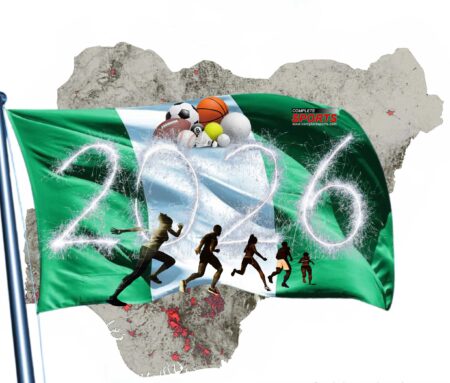Sports development in Africa is on my mind. I am asking myself probing questions. Uganda produced a John Akii-Bua in the early 1970s. He was the greatest hurdler in the world at the 1972 Olympics.
Tanzania produced Filbert Bayi in the mid- 1970s. He was the greatest middle distance runner in the world in the early 1970s.
Zambia produced Samuel Matete in the 1980s into the 1990s. He was a World 400 metres hurdling champion for a spell.
Of course, Kenya had its own long list of world and Olympic champions since the early 1970s.
These are all East African countries populated by Blacks in a region with similar environmental features and conditions that influenced their athletes’ performances.
Also Read: Odegbami – Eye on Tokyo 2020: ‘Hardwork And Merit Before Prayers’
In the group, why is it that it is only Kenya that has had a record of consistent successes through the decades and, today, have become the foremost achiever on the African continent in global sports?
The Ethiopians, and occasionally the Moroccans and Algerians, have produced some of the best middle and London distance runners also. But like the Kenyans.
What is common to all these countries that is helping them breed quality runners in this corner of the world?
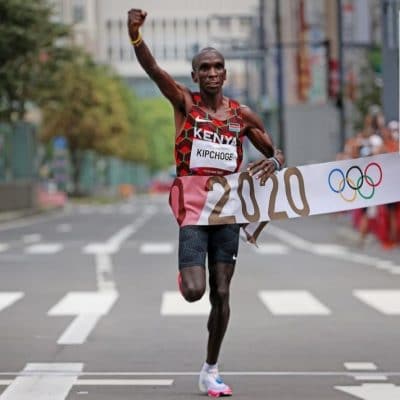
I don’t intend to provide any of these answers here. What is of interest to me is what Kenya is doing right that the others are not doing, that made the country to have a name considered bigger as a global brand than Nike or Adidas. ‘Kenya’ is a massive global brand.
The country’s athletes are achieving global success and visibility. They are in almost àll middle and long distance races including the Marathons, Cross country and Grand Prix all over the world. Thousands of Kenyan runners win most of the races and take home the trophies and the prize monies.
Many countries that intend to train their athletes to complete favourably in any of the middle to Marathon races look towards Kenya for guidance. They go and train in the high altitude areas of the country for long periods of time.
Inorder to accommodate thèm, the Kenyans have built camps in the training areas of simple and unsophisticated sports infrastructure. Thè environment is their perfect training grounds. This has influenced the establishment of an authentic sports tourism business to compliment the well-established Safari-tourism that has been the mainstay of the Kenyan economy for decades.
These days, as the results from Tokyo confirm, Kenyans have become valued raw materials for countries that are offering them citizenship and using them for international competitions. Many Kenyans ran for.many foreign countries. There are big opportunities for Kenyan runners to.migrate abroad for studies and for running career in countries willing to adopt them.
Seeing how profitable the business of running is in the world, the Kenyan government commissioned studies and research into how to institutionalise the process and make it sustainable and a win-win for all Kenyans.
Without going into the details of ‘how’, the whole of Kenya has gradually become thè ‘running capital’ of the world, everybody runs (or walks).
Also Read – Odegbami: Eye On Tokyo 2020 (DAY 14) – The Final Chapter
I sat with a group of consultants many years ago at the Jomo Kenyatta University, working on the urban renewal project of the City of Mombasa on the Indian Ocean coastline of Kenya. I watched them discuss their project – to make the city an environment where everyone is moving and exercising for general wellbeing and health purposes. The towns and cities now have special lanes on the roads, in the parks and gardens for runners, cyclists and even those that want to walk.
The motto of the project was unofficially tagģed “Move or Die”.
With all these as deliverables, all Kenyans saw and embraced the opportunities that running creates for the young, the fit and the healthy, opportunities to be rich, famous and a celebrity, and started an endless production line of runners, honed by the environment in the high altitude areas of the country, and motivated by immeasurable opportunities in a business that is global and càn take all comers.
So, when you look at the medals table of the most successful countries at the Olympic Games, Kenya would never be in the single digits, yet the whole world considers them a global force in the area of their specialisation.
It is interesting. It presents a model for other African countries to emulate, but are not. Why not?
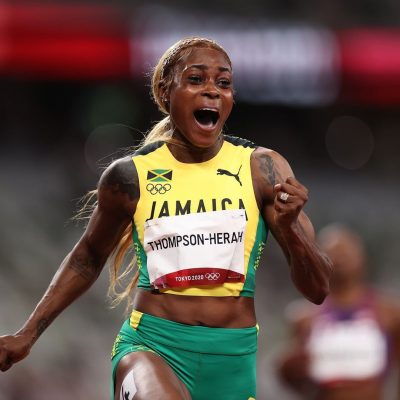
In looking at the case of Kenya, another country whose name is also bigger than most global brands these days, one sees a similarity with Jamaica.
Jamaica is the most successful country of Black persons of African descent in the world of the sprints event. The country is doing with sprinting what Kenya has been doing for decades with the middle and long distance racing, but navigating through a different route to a similar destination.
Jamaicans are loaded with the genes of the fittest and healthiest of the Black human specie from the West African sub-region. From what we know of young persons from that part of Africa (Nigeria’s performances in the 70s to the 1990s are a shining example of the possibilities) they are born to sprint and to jump. They use their natural power, speed and strength to do well in some particular sports particularly sprinting and the jumps, in Track and Field.
Unlike what obtains in East Africa where open fields in high altitude areas are the only requirements to hone natural talents, for the sprints events, the requirements are more technical and sophisticated. Tracks are needed.
That’s a major difference.
Jamaicans initially were like Nigerians, sending their best young sprinters to the American Collegiate system for better grooming and training. Like Nigerians, ultimate control of the athletes was not in their hands. Like Nigeria, the sports industry at home did not grow. Like Nigeria, sprinting did not grow astronomically, locally, suffering from the vagaries of the external interest of external forces feeding. Like Nigeria, they fed the American sports eco-system of development through Collegiate and professional systems with endless talent, the best of whom eventually competed in America and in Europe, driving one of the biggest industries in the world in the United States Industrial Sports and Leisure complex.
A few Jamaican coaches, working in conjunction with some African American coaches went to the US and received the required training in the San Jose University established tradition of training sprinters. They returned to Jamaica and, for close to to decade, struggled to convince the government to domesticate the process of developing this throng of natural sprinters within Jamaica by copying the Collegiate system that worked so well in America.
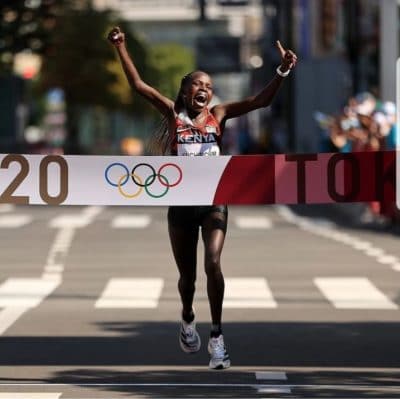
That story is not my interest here.
What followed, in a nutshell, is that Jamaica redesigned its discovery-of- talents and grassroots sports develepment stragegy along the American Collegiate system, embraced the training methodology of the most successful American coaches out of San Jose University ‘school of sprinting’, imported some Black American coaches, did a train-the- trainers program, introduced measures that made sprinting in athletics a spectacle, and introduced measures that promoted sports as a culture for schools in Jamaica. They built simple inexpensive infrastructure for training and competitions and within a decade they succeeded in turning Jamaica into the sprinting capital of the World.The result is what the world has had to confront since Usain Bolt.
Also Read – Odegbami: Eye On Tokyo 2020 (Day 13) – Prayer Time For A Miracle
Like Kenya, the sprinting tradition is now well established all over Jamaica in all schools, etched into the environment in parks and gardens, for health, recreational, educational and business purposes. Sprinting has become an integral part of life in Jamaica. Today there is an endless production line of sprinters being churned out of Jamaica’s sports complex now produces athletes that fill the Athletics tracks in nooks and crannies all over the world. Jamaicans have become exportable products raking in good revenue into the country, the country has developed a spirts tourism industry, it camps training base for sprinters from other parts of the world desirous to learn from Jamaica, and the name of the country has become, like Kenya, a massive global brand.
The finals of the women’s 100 metres event had 3 Jamaicans. They won Gold, Silver and Bronze medals, in one of the greatest sprints races ever held.
The thought of Africa, her present place in the world of sports, her potentials and the possibilities of what sports could do for the continent in a world deliberately and unfavourably re-constructed by the West so that Africans never succeed, often deposits a heavy burden on my heart.
The tragedy is that the evidences are all around us of the possibilities of what could be achieved by these most-gifted of homo sapiens, if only their political leaders, those that control the levers of power, can see and appreciate these evidences, and chart a course that will move the continent, her people and the rest of the Black race, away from a ‘slavery mentality’ in a new direction of commanding heights in economic, social and political development using the innocuous instrumentality of sports as a vehicle.
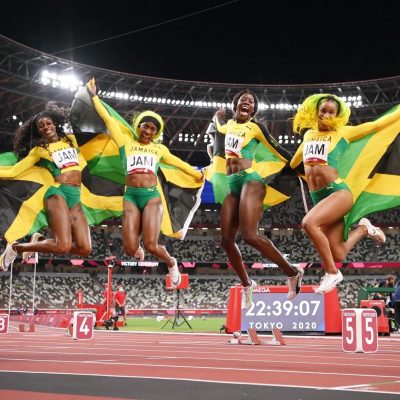
It will not take reinventing the wheel for the rest of African countries to take useful lessons from the examples of Kenya and Jamaica, focus their attention on some specific sports that they are gifted in and that would not require sophisticated infrastructure that they cannot afford, and can impact the whole country when successfully deployed.
Between Kenya and Jamaica, they have found the antidote to the exploitation of The Black man’s natural gift and talent. Their focus is not on quantity, an expensive ‘competition’ that any Third World country cannot win, but on quality and maximum use of the natural gifts in physiology and the environment, deployed strategically, domestically, and without breaking bank vaults to fund infrastructure for maximum impact and socio-economic and political effects.
Nigeria, with a population of over 200 million Black persons that are designed by nature to run and jump at no cost, within an environment that spans through low and high altitudes, and with rich human capacity in knowledge, and history of successes and potentials, with the resources to domesticate the processes, won only 1 medal at the 2016 Olympics, almost 20 places below a neighbouring poor country, Niger, that won 2 medals.
At Tokyo 2020, Nigeria won two medals. That is seen by some as growth.
For a country that has become one of the richest sources of raw athlete-materials to the rest of the world (Nigerian athletes are representing several Western and even South-East Asian Countries), it is a big shame to the Black race.
It does not require a degree in rocket science to see that what is missing and needed is the right kind of leadership, plus a clear direction.
With these in place, and within a few years, Nigeria and several other African countries, taking lessons from the Kenyan and Jamaican experiences, shall join the league of giants in the sports planet and industry.




